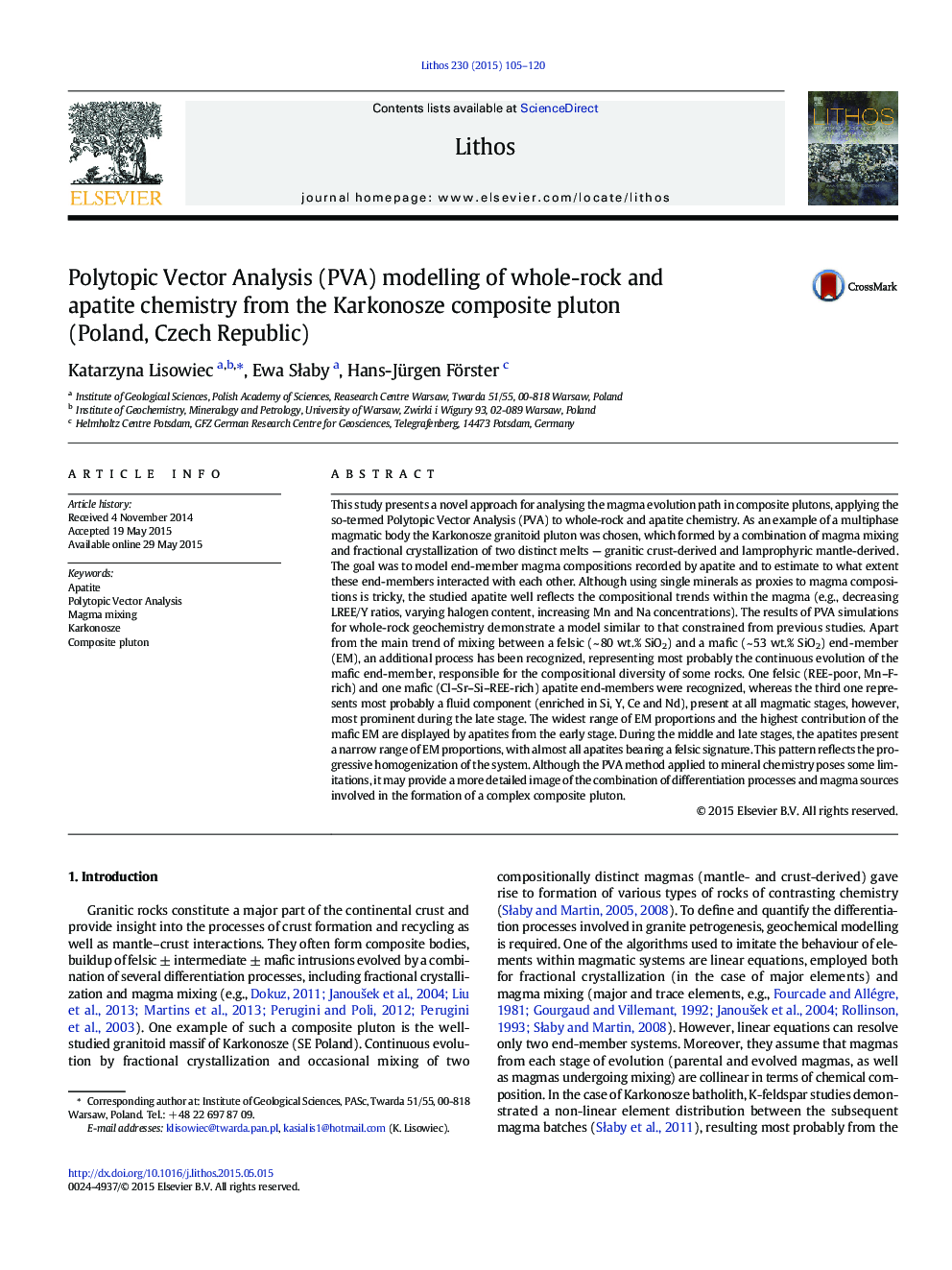| کد مقاله | کد نشریه | سال انتشار | مقاله انگلیسی | نسخه تمام متن |
|---|---|---|---|---|
| 4715674 | 1638661 | 2015 | 16 صفحه PDF | دانلود رایگان |

• We use apatite composition compared to whole-rock chemistry to trace magma mixing.
• We use Polytopic Vector Analysis for both whole-rock and apatite chemistry.
• PVA of whole-rock chemistry shows a combination of all differentiation processes.
• Apatite composition is too complex to be decomposed into end-members by PVA.
• PVA requires basic knowledge on magma evolution of the studied igneous system.
This study presents a novel approach for analysing the magma evolution path in composite plutons, applying the so-termed Polytopic Vector Analysis (PVA) to whole-rock and apatite chemistry. As an example of a multiphase magmatic body the Karkonosze granitoid pluton was chosen, which formed by a combination of magma mixing and fractional crystallization of two distinct melts — granitic crust-derived and lamprophyric mantle-derived. The goal was to model end-member magma compositions recorded by apatite and to estimate to what extent these end-members interacted with each other. Although using single minerals as proxies to magma compositions is tricky, the studied apatite well reflects the compositional trends within the magma (e.g., decreasing LREE/Y ratios, varying halogen content, increasing Mn and Na concentrations). The results of PVA simulations for whole-rock geochemistry demonstrate a model similar to that constrained from previous studies. Apart from the main trend of mixing between a felsic (~ 80 wt.% SiO2) and a mafic (~ 53 wt.% SiO2) end-member (EM), an additional process has been recognized, representing most probably the continuous evolution of the mafic end-member, responsible for the compositional diversity of some rocks. One felsic (REE-poor, Mn–F-rich) and one mafic (Cl–Sr–Si–REE-rich) apatite end-members were recognized, whereas the third one represents most probably a fluid component (enriched in Si, Y, Ce and Nd), present at all magmatic stages, however, most prominent during the late stage. The widest range of EM proportions and the highest contribution of the mafic EM are displayed by apatites from the early stage. During the middle and late stages, the apatites present a narrow range of EM proportions, with almost all apatites bearing a felsic signature. This pattern reflects the progressive homogenization of the system. Although the PVA method applied to mineral chemistry poses some limitations, it may provide a more detailed image of the combination of differentiation processes and magma sources involved in the formation of a complex composite pluton.
Journal: Lithos - Volume 230, 1 August 2015, Pages 105–120